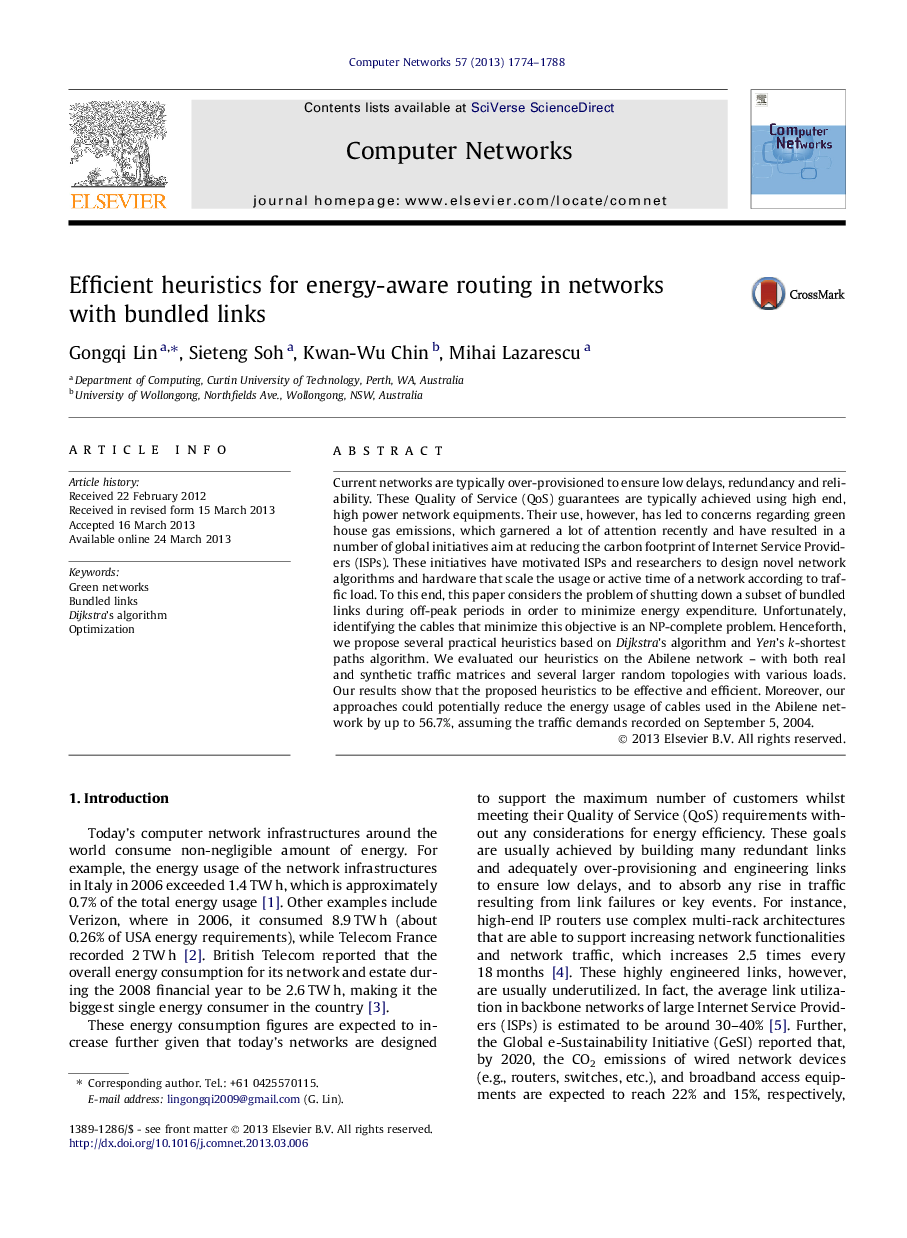| Article ID | Journal | Published Year | Pages | File Type |
|---|---|---|---|---|
| 452940 | Computer Networks | 2013 | 15 Pages |
Current networks are typically over-provisioned to ensure low delays, redundancy and reliability. These Quality of Service (QoS) guarantees are typically achieved using high end, high power network equipments. Their use, however, has led to concerns regarding green house gas emissions, which garnered a lot of attention recently and have resulted in a number of global initiatives aim at reducing the carbon footprint of Internet Service Providers (ISPs). These initiatives have motivated ISPs and researchers to design novel network algorithms and hardware that scale the usage or active time of a network according to traffic load. To this end, this paper considers the problem of shutting down a subset of bundled links during off-peak periods in order to minimize energy expenditure. Unfortunately, identifying the cables that minimize this objective is an NP-complete problem. Henceforth, we propose several practical heuristics based on Dijkstra’s algorithm and Yen’s k-shortest paths algorithm. We evaluated our heuristics on the Abilene network – with both real and synthetic traffic matrices and several larger random topologies with various loads. Our results show that the proposed heuristics to be effective and efficient. Moreover, our approaches could potentially reduce the energy usage of cables used in the Abilene network by up to 56.7%, assuming the traffic demands recorded on September 5, 2004.
